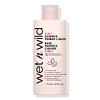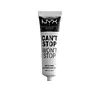What's inside
What's inside
 Key Ingredients
Key Ingredients

 Benefits
Benefits

 Concerns
Concerns

 Ingredients Side-by-side
Ingredients Side-by-side

Water
Skin ConditioningGalactomyces Ferment Filtrate
HumectantMethyl Gluceth-20
HumectantPropanediol
SolventButylene Glycol
HumectantVp/Va Copolymer
Rosa Damascena Flower Water
MaskingPhenoxyethanol
PreservativeSilica
AbrasiveSodium Acrylates Crosspolymer-2
AbsorbentEthylhexylglycerin
Skin ConditioningCarbomer
Emulsion StabilisingDisodium EDTA
Propylene Glycol
HumectantCalendula Officinalis Flower Extract
MaskingGlycerin
HumectantSodium Hydroxide
BufferingLeuconostoc Ferment Filtrate
AntimicrobialPortulaca Oleracea Extract
Skin ConditioningLaurtrimonium Chloride
Emulsifying1,2-Hexanediol
Skin ConditioningBeta-Glucan
Skin ConditioningEthyl Acetate
PerfumingAcrylic Acid
Water, Galactomyces Ferment Filtrate, Methyl Gluceth-20, Propanediol, Butylene Glycol, Vp/Va Copolymer, Rosa Damascena Flower Water, Phenoxyethanol, Silica, Sodium Acrylates Crosspolymer-2, Ethylhexylglycerin, Carbomer, Disodium EDTA, Propylene Glycol, Calendula Officinalis Flower Extract, Glycerin, Sodium Hydroxide, Leuconostoc Ferment Filtrate, Portulaca Oleracea Extract, Laurtrimonium Chloride, 1,2-Hexanediol, Beta-Glucan, Ethyl Acetate, Acrylic Acid
Ingredients Explained
These ingredients are found in both products.
Ingredients higher up in an ingredient list are typically present in a larger amount.
Butylene Glycol (or BG) is used within cosmetic products for a few different reasons:
Overall, Butylene Glycol is a safe and well-rounded ingredient that works well with other ingredients.
Though this ingredient works well with most skin types, some people with sensitive skin may experience a reaction such as allergic rashes, closed comedones, or itchiness.
Learn more about Butylene GlycolEthylhexylglycerin (we can't pronounce this either) is commonly used as a preservative and skin softener. It is derived from glyceryl.
You might see Ethylhexylglycerin often paired with other preservatives such as phenoxyethanol. Ethylhexylglycerin has been found to increase the effectiveness of these other preservatives.
Phenoxyethanol is a preservative that has germicide, antimicrobial, and aromatic properties. Studies show that phenoxyethanol can prevent microbial growth. By itself, it has a scent that is similar to that of a rose.
It's often used in formulations along with Caprylyl Glycol to preserve the shelf life of products.
Propylene Glycol is an odorless, colorless liquid. As a humectant, it helps skin retain moisture. It also aids in delivering active ingredients.
Another role of this ingredient is preventing a product from melting or freezing. Propylene glycol also adds antimicrobrial properties to a product, elongating product lifespan.
This ingredient is considered an organic alcohol and commonly added into both cosmetics and foods.
Those with sensitive skin or conditions may develop a rash when using this ingredient.
Learn more about Propylene GlycolWater. It's the most common cosmetic ingredient of all. You'll usually see it at the top of ingredient lists, meaning that it makes up the largest part of the product.
So why is it so popular? Water most often acts as a solvent - this means that it helps dissolve other ingredients into the formulation.
You'll also recognize water as that liquid we all need to stay alive. If you see this, drink a glass of water. Stay hydrated!
Learn more about Water